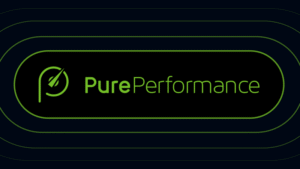The surge in demand for digital services since 2020 is a trend that is here to stay and only expected to accelerate. To compete, organizations have to achieve both speed and reliability when bringing new products and services to market. To meet this demand, organizations are adopting DevOps practices, such as continuous integration and continuous delivery, and the related practice of continuous deployment, referred to collectively as CI/CD.
CI/CD is a series of interconnected processes that empower developers to build quality software through well-aligned and automated development, testing, delivery, and deployment. Together, these practices ensure better collaboration and greater efficiency for DevOps teams throughout the software development life cycle.
Here’s what you need to know about these software development practices, how they relate to each other, and how they benefit DevOps teams as they optimize and automate more processes to achieve ever-faster time to value for customers.
Continuous integration streamlines development
As Deloitte reports, continuous integration (CI) is a software development practice that streamlines the internal process of creating software. With CI, multiple software developers can work on different features or modules of the same application and individually commit their updates to a shared code repository as they complete them, often many times a day. When they check in their code, the build management system automatically creates a build and tests it. If the test fails, the system notifies the team to fix the code. This practice helps software teams quickly detect and resolve any bugs that come up during the development process.
Continuous integration also prevents “merge hell,” which can happen when two or more developers inadvertently make conflicting changes that break the build when the lines are merged back into the master branch. Continuous integration also avoids teams having to reconcile substantial amounts of conflicting or redundant code, which can require code freezes or even a dedicated integration stage in the pipeline.
When software development teams continuously integrate incremental changes, each developer is free to make changes without worrying about throwing someone else’s work off track or about their own work being stepped on by another. Smooth, regular merging helps software development teams complete projects more quickly and efficiently. It also ensures there is always a testable, up-to-date build that will properly compile, which is critical for frequent and rigorous application testing.
This approach saves time and resources that would otherwise be spent fixing issues later in the software development life cycle, or worse, after release, when issues are much more difficult to address.
Continuous delivery ensures code is always ready to deploy
Continuous delivery (CD) is a process in which DevOps teams develop and deliver complete portions of software to a repository, such as GitHub or a container registry, in short, controlled cycles. Continuous delivery seeks to make releases regular and predictable events for DevOps staff, and seamless for end-users. Another goal of continuous delivery is to always keep code in a deployable state so updates can go live at a moment’s notice with little or no issues.
DevOps teams can automate CI/CD pipelines to move code through the appropriate environments with no human input, which accelerates the build, test, and deployment stages of software development — or any additional stages they have in place, depending on the processes they use.
For example, when a feature is ready for client demonstration, the DevOps team can have a CD tool automatically deploy it to a test server so the client can see how it works and provide feedback before it is released to the production server.
Continuous deployment ensures customers always have the latest
Continuous deployment (also CD) is an extension of continuous delivery in which builds that pass testing are automatically deployed directly to production environments on a daily, or even hourly, basis.
Continuous deployment hastens the feedback loop with your customers and eases the burdens on operations teams by automating the next stage in the pipeline.
Once an organization’s continuous delivery practices are stable and mature, they often adopt automated continuous deployment and testing in a tiered “blue-green” sequence. In this scenario, the new build (green) is deployed in parallel with the existing build (blue) to ensure it works before the blue build is retired. Teams can also use a phased “canary” deployment approach, where the new build is gradually phased in to replace the existing build.
Continuous delivery vs. continuous deployment: which is it in CI/CD?
Continuous delivery (CD) often gets confused with continuous deployment (CD). If CD stands for continuous delivery and continuous deployment, which is it when people refer to CI/CD practices?
In short, it’s either continuous delivery, or continuous delivery and continuous deployment. Although related, the two terms refer to automated processes that happen at different points in the delivery workflow.
You can think of adopting these practices as three steps in a continuum of DevOps automation:
- Continuous integration to streamline development and automate building and testing. It’s a way for developers to work on the same code base at the same time.
- Continuous delivery to automate the process of delivering completed code blocks into the main branch, where it can be deployed to a production environment by the operations team. It’s a way for the development part of a DevOps team to automate the process of testing and committing code.
- Continuous deployment to automate the process of deploying completed, tested code into a production environment. It’s a way for the operations part of a DevOps team to automate the process of deploying new code to customers.
When an organization first adopts agile DevOps practices, they often start out with continuous integration, and mature quickly into continuous delivery, thus achieving CI/CD. Many organizations stop here, preferring to release production code manually. Others progress into continuous deployment so they can automate the entire software development, delivery, and deployment pipeline.
Want to learn more about DevOps?
Streamline the way IT operates and enterprises grow with observability and AIOps. Read our DevOps eBook – A Beginners Guide to DevOps Basics
The benefits of CI/CD
The main benefit of continuous integration and continuous delivery is that it reduces the time required to develop applications and features. This gives companies a competitive advantage over businesses that still take a manual approach to software development.
Besides the competitive advantage, CI/CD enables agile development teams to constantly iterate and release new features. These practices ensure everyone is working with the same version of the code as they develop and refine features and functions. With the logistics of integrating and testing builds automated, engineers can focus on what they do best: coding.
If teams have implemented continuous deployment, code can spend less time waiting for testing and deployment and more time in production, which accelerates feedback from users and, ultimately, improves business outcomes.
Increased efficiency, reduced time to market, and quicker innovation make CI/CD an attractive proposition for organizations of all types.
The drive to optimize and automate more CI/CD processes
To meet competitive demands, organizations know they must release new products and services more quickly than ever without compromising quality or reliability. They know basic CI/CD practices are fundamental to DevOps and DevSecOps initiatives that look to develop applications with more effective collaboration and greater precision.
Teams that implement CI/CD practices successfully rely on many tools and methods to manage features, versions, testing, and builds. Automation happens at every stage of the pipeline, from building, packaging, and testing to pushing applications to different production environments.
To accelerate the development pipeline for ever-faster releases with less risk, teams need continuous automation and advanced AI-driven observability across all the tools in their DevOps toolchain so they can automate manual steps and identify quality issues earlier in the software lifecycle.
If your organization uses or is considering adopting CI/CD DevOps processes, a best practice is to implement a full-stack observability platform that can provide code-level visibility of all software builds, apps, and services in your environment, whether they’re in development or deployed to end-users.
The Dynatrace Software Intelligence Platform continuously and automatically monitors the performance of DevOps tools, and seamlessly integrates with CI/CD workflows. With improved collaboration on a single platform and a shared data model, you can ensure your entire team has continuous situational awareness across the lifecycle.
To take a deeper look at continuous delivery, see my next post, What is continuous delivery and what are best practices for implementing it?




Looking for answers?
Start a new discussion or ask for help in our Q&A forum.
Go to forum